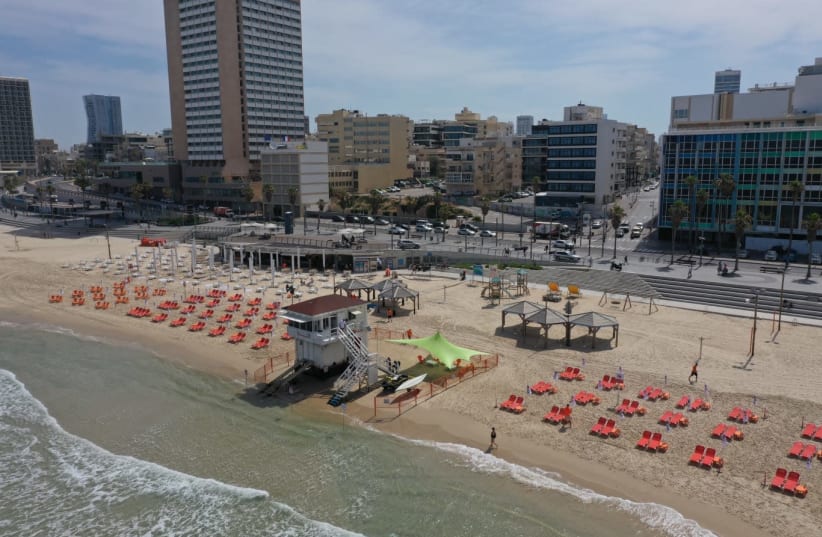The Tel Aviv-Jaffa Municipality presented its proposed plan to reopen beaches closed to the public during initial coronavirus restrictions to the Interior Ministry on Monday at Frishman Beach.
"After many weeks of closure, the people of Israel need a bit of air. The beaches offer entertainment for the public at an affordable price. As we witnessed in the past few weeks, the public is eager to return to the beach," said Tel Aviv Mayor Ron Huldai.
The plan can be implemented as early as tomorrow, according to Huldai.
"The layout we presented this morning is a model that can be implemented tomorrow morning and it meets all the requirements set by the Health Ministry."
Despite several reports from the Health Ministry of a plan to allow the public to soon visit beaches, the proposal comes amid ministry claims made on Monday opposing the opening beaches to the public.
"The subject is being discussed with the relevant municipalities," the Health Ministry said. "Only after standards we require for maintaining the public's health will be met, will we allow the opening of beaches."
The proposal aims to uphold those Health Ministry regulations in order to protect beach goers from contracting the coronavirus. The proposal, titled "Blue Sea – Purple Badge," referring to the Health Ministry's set of standards for businesses to safely reopen during the pandemic, includes an extensive set of strict guidelines covering everything from social distancing to the lowering the pressure on the beach showers in order to prevent splatter.
Additionally the proposal offers a model to make the regulations widely available to the public, and includes examples such as the spread of leaflets to the public.
The spread of that information to beach-goers could come with difficulties as an estimated 150,000 people visit the beaches on weekends and holidays. While the number of visitors on weekdays is far less, the quantity is still high at around 25,000 beach-goers visiting Tel Aviv-Jaffa's expansive beaches, which extend from the Herzliya border in the north to the Bat Yam border in the south, approximately 13.5 km length. Jerusalem Post Staff contributed to this report.
